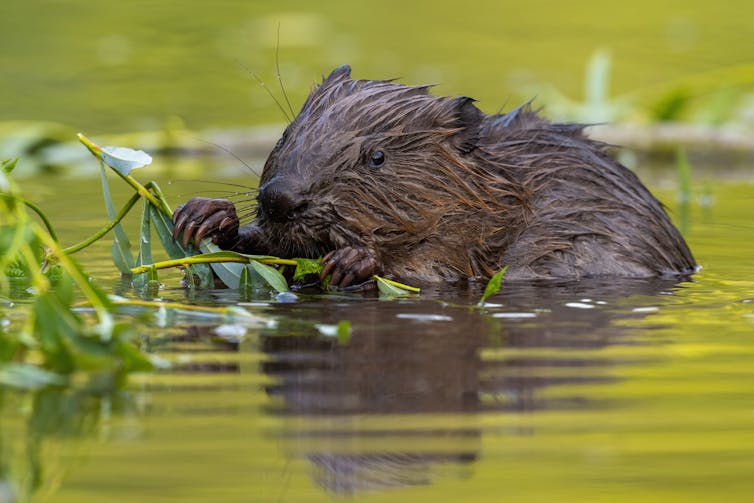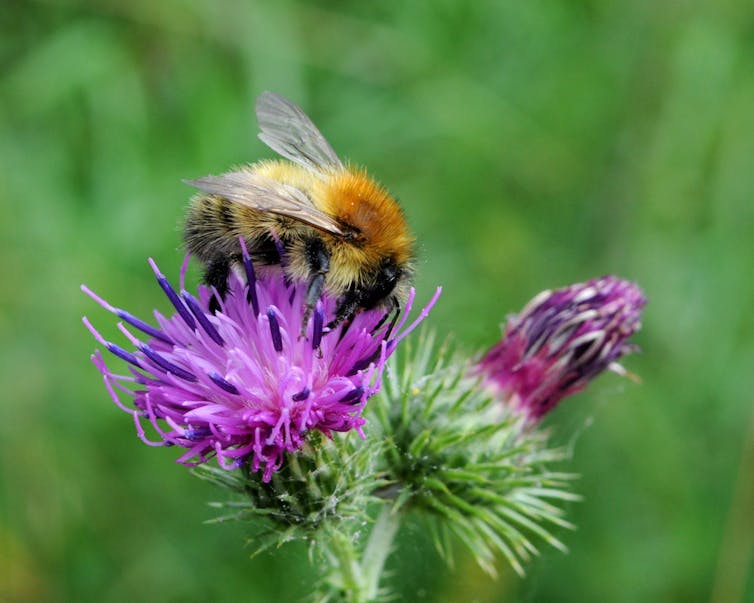
Biodiversity refers to the variety of life found on Earth and underpins the natural systems which grow our food, cleanse our air and water and regulate our climate. Human life cannot exist without it. But around one million animal and plant species are now threatened by extinction.
At the recent UN biodiversity conference (COP15) in Montreal, parties agreed on a set of targets for reversing global biodiversity loss by 2030. This includes protecting 30% of the Earth’s surface and reforming subsidies for farming and fishing. Meeting these targets will require coordination between governments and businesses.
Yet the pace at which legislation and policies take effect is exceeded by the global rate of biodiversity loss. Here are some of the most effective actions you can take to help reverse biodiversity loss and restore nature now.
1. Donate
The total area of protected land and sea in the UK increased from 27.6 million hectares in 2017 to 40.6 million hectares in 2022. Much of this area is managed by charities, legal bodies and local authorities.
These organisations, such as the RSPB and the Wildlife Trust, restore biodiversity by creating new habitats, improving existing ones and ensuring that wild areas are connected with forested corridors and reserves to allow species to roam. For example, the Wildlife Trust has reintroduced beavers to fenland in Kent, where wet grassland habitats are now thriving as a result.
But the funds available for nature conservation in the UK are often insufficient. Individuals and businesses can donate money to support the work of these organisations.

2. Volunteer
Many charitable organisations are dependent on volunteers to undertake administration and marketing, site management or to spread the message about the biodiversity crisis. With new digital ways of working, people could volunteer from their own home at suitable times. Experience is not necessary in most cases and volunteers often benefit from on the job training.
Volunteering can also have other benefits. Research has revealed spending just two hours in nature each week can benefit health and well-being.
3. Change what you eat
No one likes being lectured about their diet. But unsustainable farming methods, the expansion of agricultural land and our meat-based western diets all threaten biodiversity.
Converting natural habitats to agricultural land has resulted in one-quarter of all remaining mammal species being threatened with extinction. Research has also shown that agricultural intensification now means that more than half of European bird species are threatened or in decline.
To reverse biodiversity loss, we must change both what we eat and how much we consume.
The UK’s National Food Strategy and the Food and Land Use Coalition’s “Better Futures Report” recommend a diet that is less reliant on meat. The Food and Land Use Commission, for example, suggest that, from 2030, a sustainable adult male diet should consist of 14g of red meat per day, 29g of chicken and other poultry, 250g of dairy products, 500g of fruits and vegetables, 50g of nuts and 75g of soya bean and other legumes.
4. Nature-friendly gardens
Urbanisation is increasingly fragmenting natural habitats and, as such, species decline is highest in cities. As cities continue to grow it will become more important to have multiple approaches for biodiversity conservation.
Our gardens, although typically not spacious enough to maintain species diversity, can be important habitats in urban environments. Working with our neighbours, we can scale up our gardens by growing networks of flowers to help insects feed and planting trees for birds to nest in. This will increase biodiversity by creating a patchwork of habitats across a whole neighbourhood. Wildlife-friendly gardens can create corridors for a wide range of species and improve connectivity, provide shelter or nesting sites, maintain genetic diversity and increase the abundance of native plants even in the smallest spaces.
A study in 2009 found that there were up to 28.7 million trees, 3.5 million ponds and at least 4.7 million bird nesting boxes in UK gardens. Nesting bird numbers can be increased if we know where trees can be planted for maximum effect. Networks of pollinating flowers across gardens could also help insects and butterflies feed.

5. Indoor cats and responsible dog owners
Cats are natural predators and allowing your pet to roam freely around the neighbourhood means it – and all the other free-roaming pet cats out there – could be responsible for the deaths of millions of animals each year. Research in Australia revealed that by allowing cats to freely roam, predation on local prey per square kilometre in residential areas is 28–52 times larger than predation rates by feral cats in natural environments. Cats have caused such devastating impacts to Australian wildlife that cat predation is listed as a key threat to native wildlife within national legislation.
In the UK, cat ownership in the UK has increased by 13% on average each year over the past 40 years so that roughly 90% of the UK’s cats are now pets. This has correspondingly increased the threat to our native wildlife.
There are several ways we can reduce the impact of pet cats on biodiversity. Keeping a cat well fed reduces their need to hunt. Another option is to keep them indoors for parts of the day, during the night or entirely. The impact of pet cats on Australian wildlife has grown so severe that local authorities have introduced bylaws and curfews to contain cat predation.
Cats predominantly threaten biodiversity in urban areas. Yet the interaction between dogs and wildlife occurs more frequently in rural situations.
The issue here arises primarily as a result of predation and disease transmission. But dog faeces and urine fertilise soils with nutrients and can change the type of plants that grow in an area. This carries knock-on effects on a habitat’s structure. By picking up dog faeces and correctly disposing of it, dog owners can reduce the input of nitrogen to the soil by 57% and phosphorus by 97%.
The best antidote to despair about the state of the natural world is to immerse yourself in it. Give these steps a try and you should hopefully discover more ways to not only lessen your footprint, but enjoy a more vibrant local environment.

Don’t have time to read about climate change as much as you’d like?
Get a weekly roundup in your inbox instead. Every Wednesday, The Conversation’s environment editor writes Imagine, a short email that goes a little deeper into just one climate issue. Join the 10,000+ readers who’ve subscribed so far.
Kate Hiseman does not work for, consult, own shares in or receive funding from any company or organisation that would benefit from this article, and has disclosed no relevant affiliations beyond their academic appointment.
This article was originally published on The Conversation. Read the original article.







